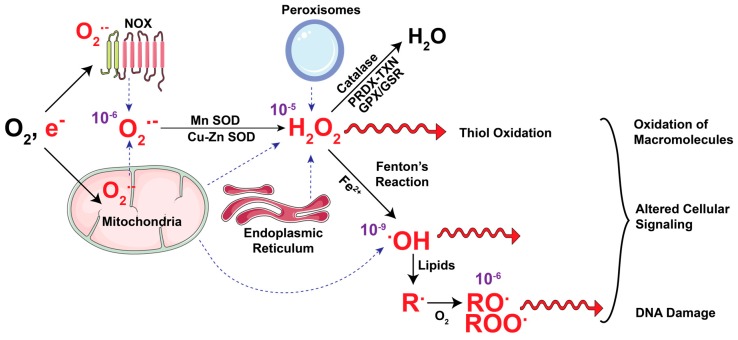Figure 1.
ROS axis: generation and detoxification of common reactive oxygen species. The mitochondrial electron transport chain (ETC) and NADPH oxidases (NOX) take up oxygen (O2) and generate superoxide (O2•−) which is dismutated in the mitochondria, peroxisome and endoplasmic reticulum by Copper-Zinc (Cu-Zn) and Manganese (Mn) superoxide dismutases (SOD) to generate hydrogen peroxide (H2O2). H2O2 is converted into water by simultaneous oxidation of the catalytic cysteine residues of the peroxiredoxin (PRDX) and thioredoxin (TXN) proteins. H2O2 is also actively nullified by the glutathione peroxidase-glutathione reductase (GPX-GSR) that recycles oxidized glutathione (GSSG, not shown) back to its reduced form (GSH, not shown). Mitochondrial O2•− radicals release Fe+ ions by damaging ETC complexes. In presence of Fe2+ ions H2O2 converts to hydroxyl radical (•OH) through Fenton’s reaction. Both H2O2 and •OH interacts and oxidizes macromolecules, alters cellular signaling and causes oxidative DNA damage, which drives gene mutations. •OH initiates oxidation of lipids to alkyl (R•) groups, which then oxidize to alkoxyl (RO•) and peroxyl (ROO•) radicals. (ROS is shown in red, dotted blue arrows indicate the source of ROS and purple numbers indicate half-life of these radicals in seconds).

